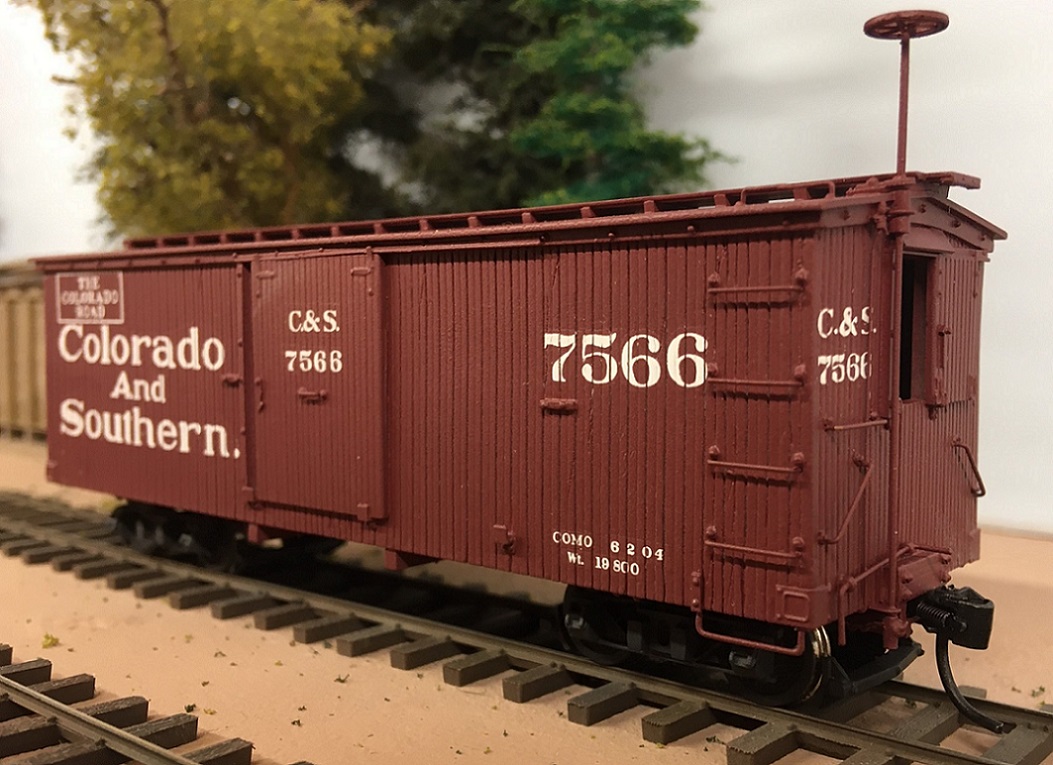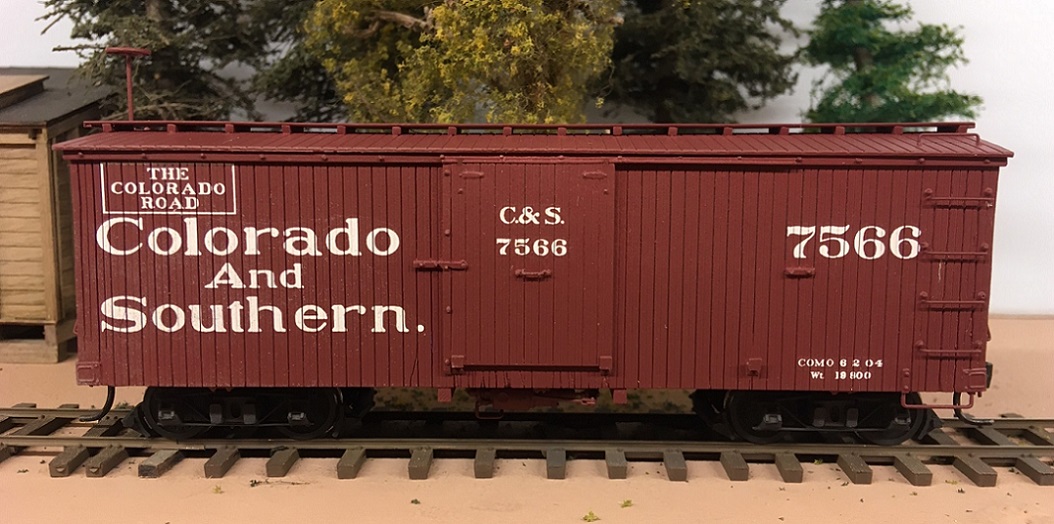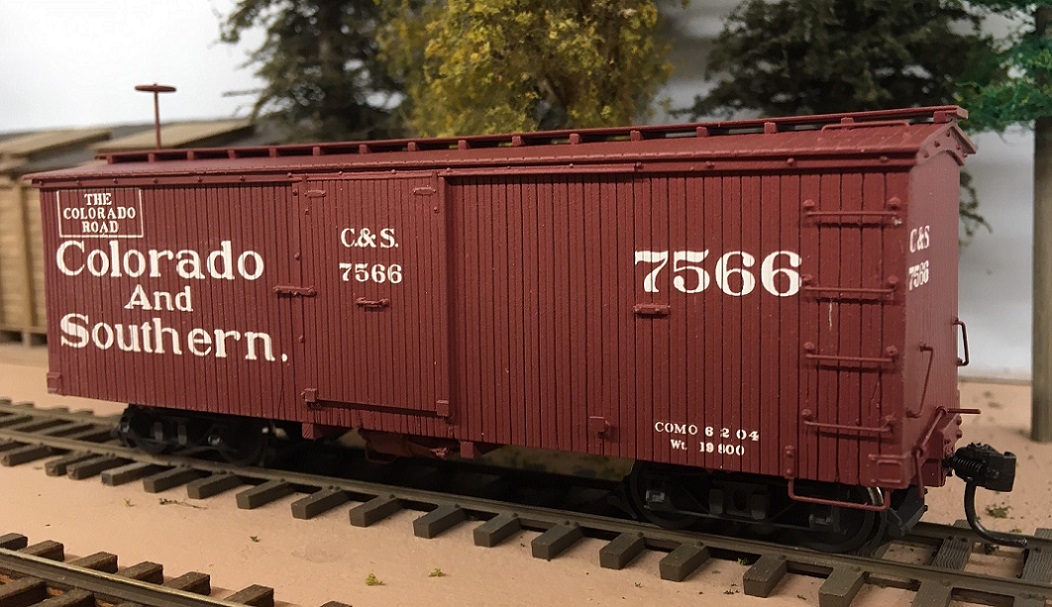Building a 1909 Roster in C&Sn3
|
This post was updated on .
What's not to like about the C&S in the year 1909?
The South Park Division was at the height of prosperity. Although the CB&Q had acquired the C&S the previous fall, the new management had not begun their business plan of dismembering the South Park -- that wouldn't happen until late 1910 and in 1911. The locomotive fleet continued to evolve: All the motive power had shotgun stacks, mounted on extended smoke boxes with smoke box front extensions. A variety of kerosene headlamps were cantilevered out over the smoke box fronts, on those unique C&S brackets. Stubby wood pilots were the norm. Tender air tanks had migrated to the boiler tops and cabs had been steel sheathed. A new locomotive paint scheme, adopted in 1906, had the familiar spelled out road name on tenders and numbers on the cabs, both in aluminum leaf. The new B4-x locomotive class lettering was in place. The passenger fleet was evolving, too. Many of the head end cars had their platforms removed by 1909, and the combines would follow as well. Fancy gold lettering was being replaced with a simpler, familiar style in gold leaf. The freight car fleet, and its lettering, was perhaps at its most diverse. Inherited freight cars with the "Colorado Road" lettering were still in service, though the numbers of such cars was beginning to dwindle. The new St Charles cars of 1898 -- reefers, boxcars, coal cars and the AC&F 1900 stock cars -- were still rolling about with their original builders lettering. And a couple of years earlier, new boxcars, coal cars and stock cars started leaving the C&S shops with the new block monogram "C&S" lettering. The caboose rebuilding program had begun, though some of the inherited way cars were still in service, without cupolas. Like the 1924 thread, this will be a place holder for my 1909 roster models, as they are completed.
Jim Courtney
Poulsbo, WA |
Re: Building a 1909 Roster in C&Sn3: UP built 27 foot boxcar.
|
This post was updated on .
I described how I kit bashed this 27 foot boxcar from a Cimarron Works resin kit back in 2017: http://c-sng-discussion-forum.41377.n7.nabble.com/C-amp-Sn3-Kitbash-of-the-UP-built-27-foot-boxcar-Outfit-Car-Info-td8100.html#a8129
With retirement, I finally added a couple of missing details, and then primed the car with Tamiya fine gray primer. A few flaws that became visible were repaired as best I could. Finally, the car got a coat of paint with Polyscale "Rock Island Maroon" and was lettered with The Leadville Shops 1900 boxcar lettering set, CWDS-27: https://www.theleadvilleshops.com/product-page/cwds-27-c-s-boxcar-ca-1905    I found that the box herald in the boxcar set was too tall, but was a perfect height for inherited coal cars in 1901. Conversely, the box herald in The Leadville Shops cinder car decal set, CWDS-14, fit perfectly on the boxcar: https://www.theleadvilleshops.com/product-page/cwds-14-c-s-cinder-car. The remainder of the cinder car lettering will also fit inherited coal cars in 1901, as well as the new 1902 coal cars as they still appeared in 1909. As this car's lettering will be almost a decade old in the summer of 1909, weathering is certainly in order. Hopefully weathering will help hide some of the flaws in the exaggerated car siding. The car actually looks better when not photographed in extreme close-up. Distance hides a multitude of flaws. This will be the only 27 foot boxcar on my 1909 roster. The June 30, 1909 freight car inventory showed only 13 such cars still in revenue service. When the new SUF boxcars began leaving the C&S Car Shops later in 1909 and in 1910, even those were pulled from service. A few were converted to MOW service, the remainder became sheds or were "destroyed" (C&S'eese for scrapped). I do have five of Bill Meredith's laser cut, 27 foot boxcar kits, ready to build for my 1901 roster . . . The Peninsular 20 ton freight trucks are place holders, until Michael York's new "type - C" truck is available from Shapeways as a print. (Ahem . . . hint, Michael . . . hint, hint  ). ).
Jim Courtney
Poulsbo, WA |
«
Return to C&Sng Discussion Forum
|
1 view|%1 views
| Free forum by Nabble | Edit this page |

